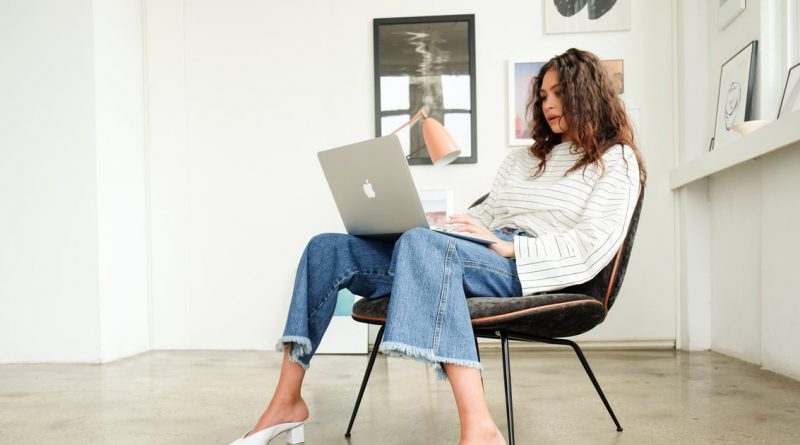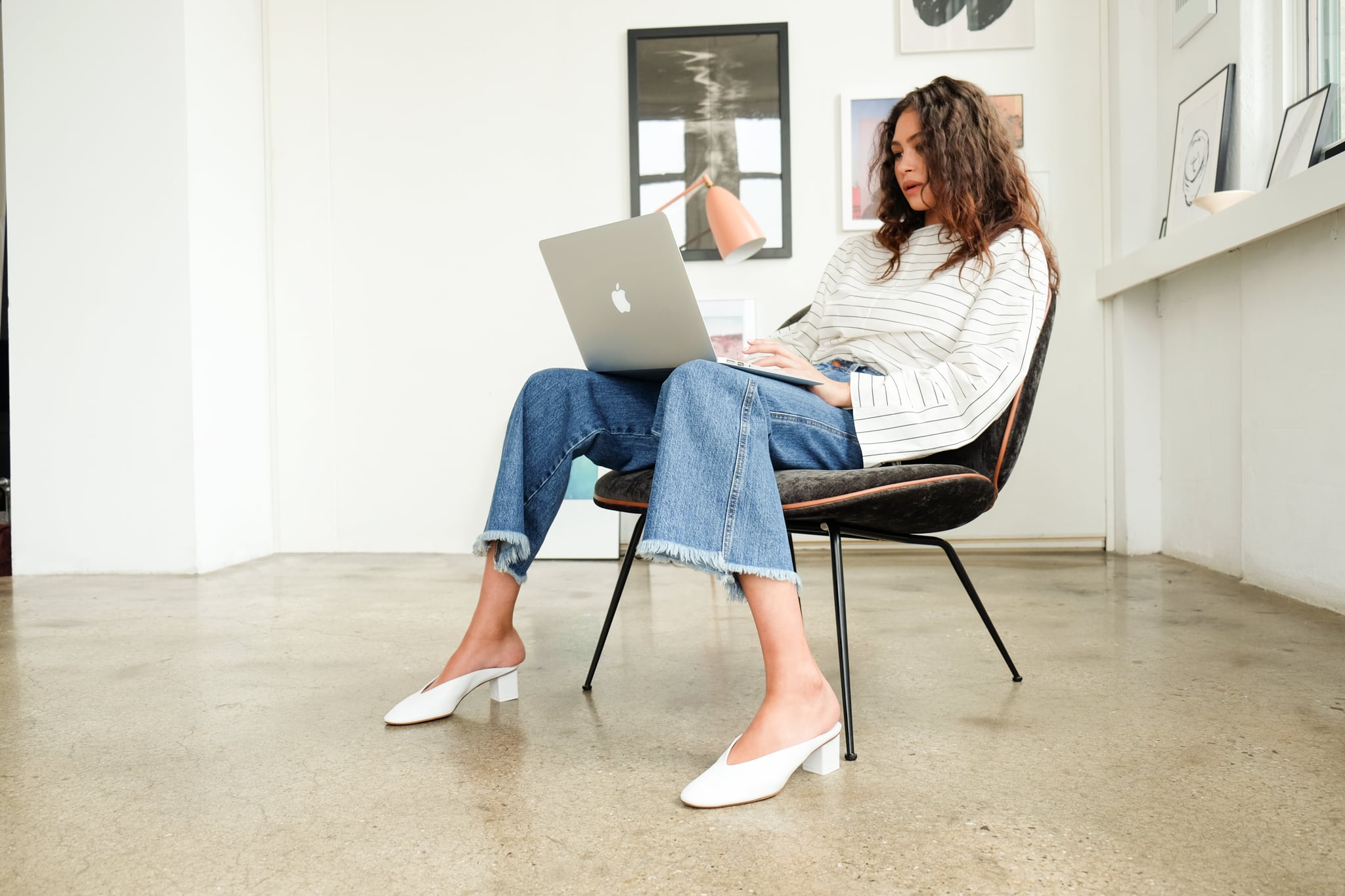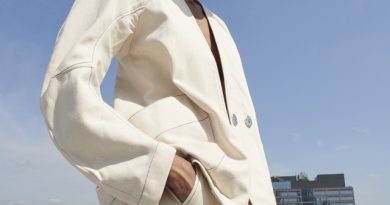Does Wearing Sweatpants Affect Your Mood?
I’ve taken Zoom calls while dressed only from the waist up and worked from home, on some days, without changing out of the pajamas I wore to bed the night before. I’ve talked to friends and co-workers who’ve done the same, begging the question that’s been on our minds since the pandemic began and social distancing and stay-at-home advisories ensued: why bother getting dressed if we’re not going anywhere?
The thing I keep coming back to is my innate love of fashion, but that’s not an experience everyone shares. What may be a better indicator that there’s something to swapping out our sweatpants is that it can actually impact our mood and productivity. To get some clarity, especially as we approach a fall sheltering-in-place and prolonged periods of living in our loungewear, we enlisted the experts. Ahead clinical psychologist Dr. Jordana Jacobs and Yunetta Smith of Spring Forth Counseling weighed in on how getting dressed really affects us.
How Does What We Wear Really Affect Our Mood?
“We all know that good old adage ‘dress for success’ . . . it’s more than just a cliché. Research supports that the way we dress can in fact impact the way that we feel.”
Ever throw on a dress you love when you’re having a bad day and feel a shift in the right direction? As it turns out, there’s some real evidence that points to dressing as a form of self-care. As Dr. Jacobs explains, “self-care can come in many different forms. It can range from making sure you get eight hours of sleep each night to putting together a cute outfit in the morning for your Zoom calls. Regardless of what form it takes for you, knowing that you are treating yourself well makes all the difference in your level of self-esteem. Self-esteem can be thought of as the bedrock for mood and productivity. When you have confidence, you not only feel better, but you often look better and perform better too.”
As Yunetta reminds us, “we all know that good old adage ‘dress for success’, but as she elaborated, “it’s more than just a cliché. Research supports that the way we dress can in fact impact the way that we feel. The ‘Enclothed Cognition Theory’, coined by Hajo Adam and Adam D. Galinsky, supports that clothing can have an effect on the way we, think, feel, and function. Specifically influencing our attention, confidence, and ability to think outside of the box.”
How Does Wearing the Same Thing Affect Our Mental State Over Time?
As we’re approaching nearly half of a year spent largely at home, we have to wonder if not getting dressed for weeks and weeks on end will take its toll. Sure, it’s fun for a few days to live in your pajamas, but what happens when we stop getting dressed for the office, events, or even, changing our clothes at all? When we asked Dr. Jacobs, she referenced the importance of routine for our mental health and how COVID-19 has dramatically impacted that routine for so many of us: “For patients who have experienced the depressive effect of quarantine life, I highly recommend that they start by re-create a morning routine, which could include meditation, working out, showering, getting dressed, putting make up on, eating a healthy breakfast, etc. This type of routine making is part of a larger technique used to treat anxiety and depression called behavioral activation. It is important that we continue engaging in behaviors that increase our sense of achievement and control.”
Yunetta echoed the sentiment, acknowledging that “Routine is vital. With so many things outside of our control, it is helpful to identify some things that you can control, such as what you decide to wear, your skincare routine, or what shade of lipstick you decide to apply. Having a routine can help us to create order in our private world and have a sense of normalcy in a very abnormal circumstance. I’ve found that over the past five months what I wear and how I prepare matters. I have noticed over the months that you are what you eat and you are also what you wear.”
Is There Any Evidence That Wearing Certain Colors Has Mood-Boosting Effects?
A “pop of color” is a well-referenced styling trick in the fashion biz, but the appeal of a pretty hue isn’t something you have to be a fashion enthusiast to appreciate. As Yunetta notes even her own choice to wear color has a noticeable effect on her clients, “My clients typically respond well to bright colors such as yellow, orange, or green and blue. Sometimes a pop of color found in a pair of earrings, scarf, or tie can do the trick. I think my clients appreciate the fact that I took the time to show up for them.”
Dr. Jacobs points to color as another way to connect into what makes you comfortable — again, that notion of dressing as self-care. “Wear, whatever the color, [what] makes you feel most comfortable in your own skin. Perhaps you are someone who feels good in blue because it matches your eyes or black because it highlights the color of your hair. What is most important is dressing in a way that makes you feel even more you.”
Could Changing Our Clothes Before and/or After Work Help Us Shift Gears Between Work and Life at Home?
“When we leave work, we metaphorically say we have to ‘switch hats,’ but when you begin working in the same space you are living, it may be effective to take this suggestion even more literally.”
If you’ve been taking work calls at the kitchen table, where you also eat breakfast and prep dinner, you may be feeling a real lack of work-life separation — and balance. You’re not alone. “Since this pandemic hit, our homes have literally become our office, our children’s school, our restaurants, our movie theaters, our gyms, and our churches just to name a few.” notes Yunetta, “It’s no wonder that we are a bit stir crazy.” But there is something we can do about it, she says: “Creating boundaries can help provide a sense of separation in your day. As one event ends, we can mentally prepare ourselves for the transition. Be creative in designating spaces for work, rest, and fun. Your body will become accustomed to this over time and it may be easier to shift into work mode, rest mode, and play mode. Changing clothes can aid with this as well. Having lounge clothing on after work or active wear when playing or exercising can help you get in the right frame of mind.”
“When we leave work, we metaphorically say we have to ‘switch hats,’ but when you begin working in the same space you are living, it may be effective to take this suggestion even more literally,” Dr. Jacobs suggests. “Switching outfits, turning on different music, changing the scent of your home with candles or incense, can all help create the much needed differentiation between work and life. This process allows us to more readily disengage from work and re-create the work-life balance we may have lost.” While it may not come as naturally, the experts will tell you carving out those boundaries and creating change — clothing, or otherwise — to break up the day are going to be important to your well-being.
Image Source: POPSUGAR Photography / Paul Kabata
Product Credit: Tibi Top, Rodebjer Jeans, Bag Gray Matters Shoes




